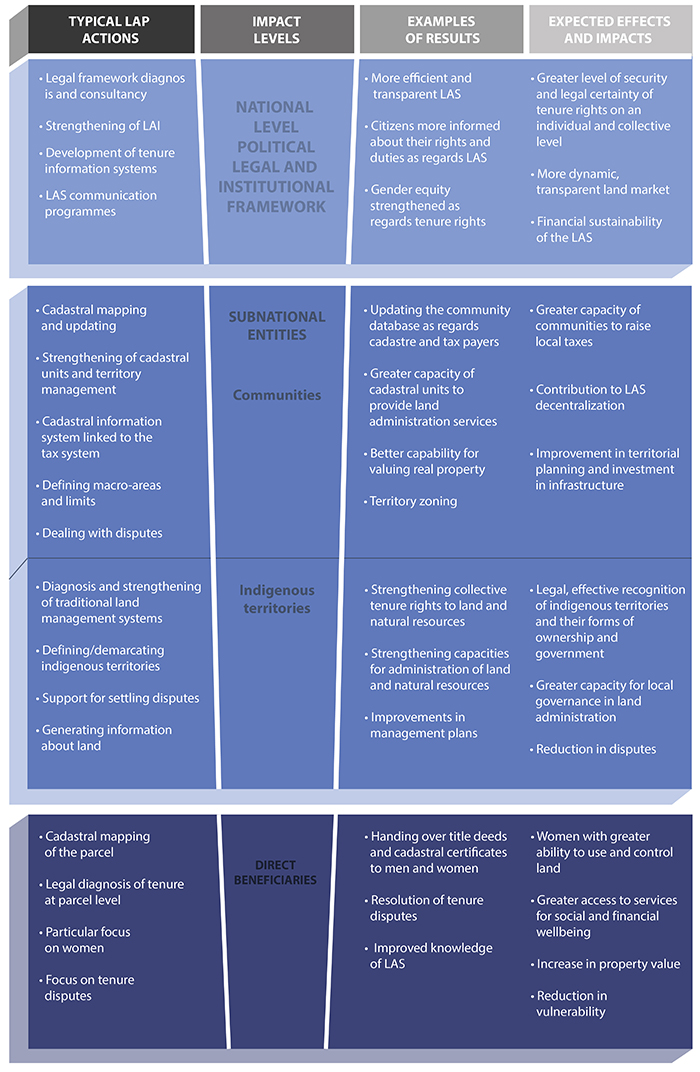Identified impacts
Some of the impacts identified in this tool are given below:
- National Level
This is the level of policies and legal, regulatory and fiscal frameworks which concern all the citizens of a country; it is expected that LAPs will help to improve the definition and scope of the rights and obligations of citizens with regard to individual and collective ownership and their recognition. This will contribute to fair access to land and will increase security and legal certainty of tenure for men and women. - Institutional Level
Based on land administration systems, LAPs seek to contribute to greater efficiency, financial sustainability, transparency, links between institutions and greater quality and accessibility to the services offered. Similarly, a combination of achieving modernization of LAIs, the existence of an information system for ownership, and the strengthening of ownership rights creates greater confidence in LAIs along with greater security and legal certainty of tenure. - Territorial or Subnational Entities
Municipal districts, indigenous territories, and protected areas with responsibilities for land administration and natural resources can benefit through an updated, functional cadastre from clearly defined boundaries and the strengthening of their rights and tenure systems. These results will allow for improvements in local governance systems, facilitate territorial planning, reduce disparities about land ownership and natural resources, and increase receipts from raising taxes. - Households whose ownership rights have been strengthened
The effect of LAPs is to strengthen security and legal certainty of tenure through title deeds, settling disputes and clarifying boundaries. These results can have positive impacts by improving the livelihoods of households and the perception of security and legal certainty of individual or collective ownership.
Visualizing impacts and interventional levels of LAPs
LAPs are involved at different levels of society, and it is therefore necessary to visualize the expected effects of LAPs at each level. Inspired by the Grassroots Development Framework developed by the Interamerican Foundation1, the chain of results and impacts can be represented vertically, by a cone-shaped diagram, in which the widest part corresponds to the effects of LAPs on a greater proportion of society, as in the case of legal reforms which affect all the citizens of a country, and the narrowest part of the cone corresponds to smaller sectors of the population, such as households.
It should be noted that although the results are presented horizontally here, the results framework of each module is presented vertically following the cause and effect logic described above.
Diagram 2: Intervention of LAPs at various levels of society
Diagram 2: Intervention of LAPs at various levels of society



